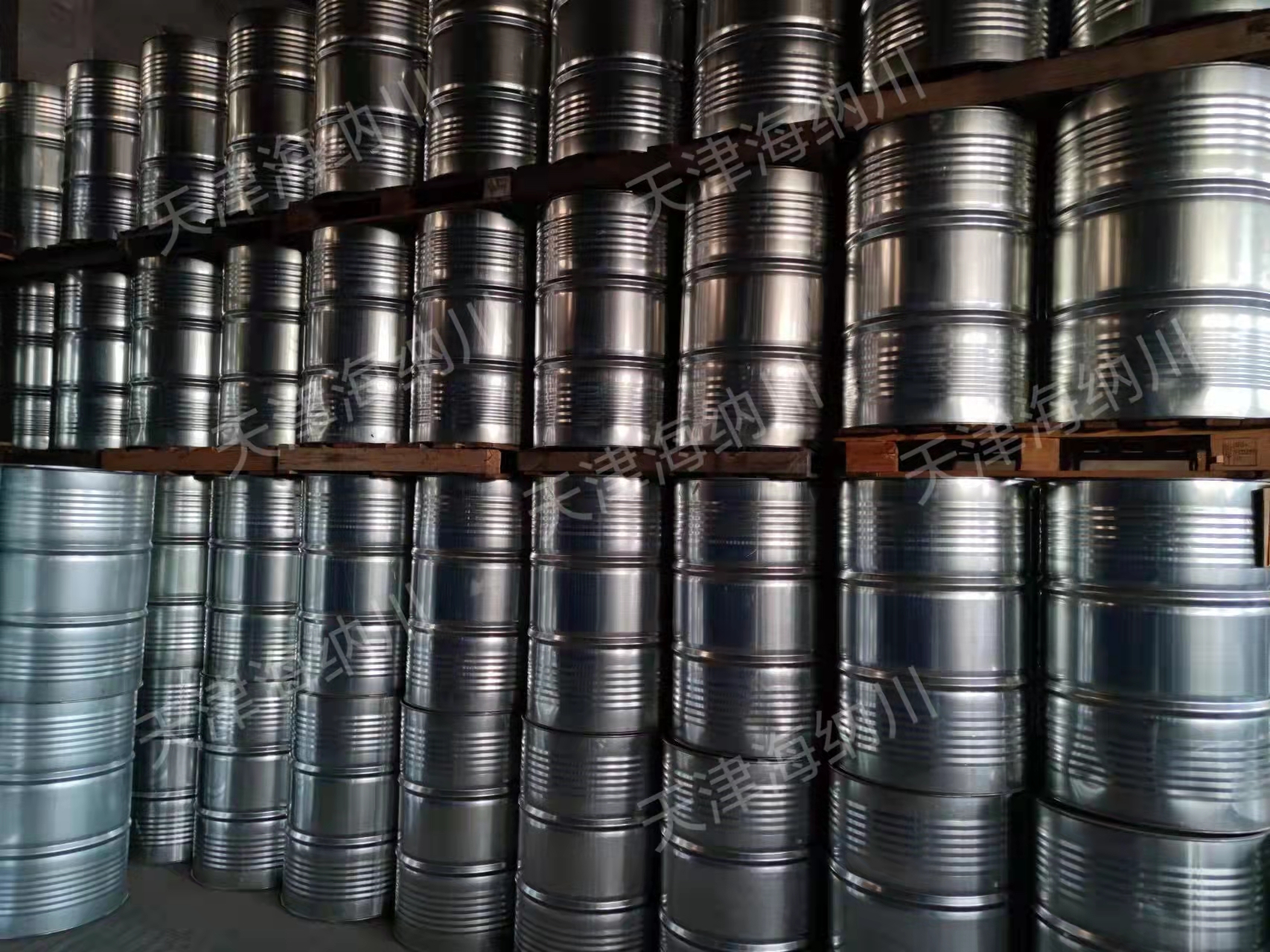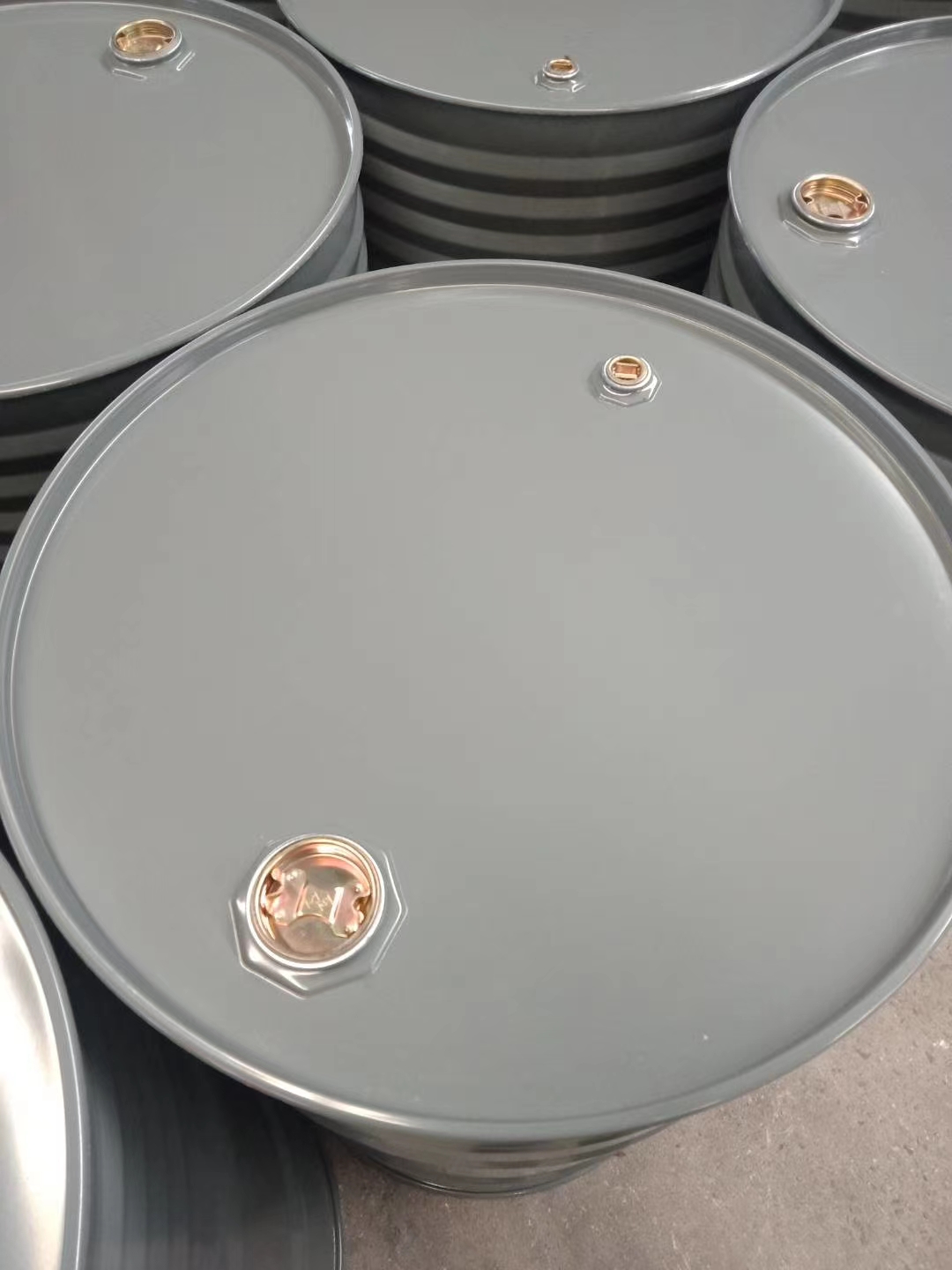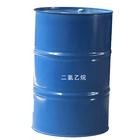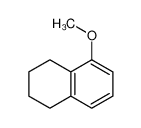| Product name | 1,4-Dioxane |
|---|
| Product number | - |
|---|---|
| Other names | DIOXANE, 1,4- |
| Identified uses | For industry use only. 1,4-Dioxane is used as a solvent for cellulose acetate, ethyl cellulose, benzyl cellulose, resins, oils, waxes, some dyes, and other organic and inorganic compounds. |
|---|---|
| Uses advised against | no data available |
| Company | MOLBASE (Shanghai) Biotechnology Co., Ltd. |
|---|---|
| Address | Floor 4 & 5, Building 12, No. 1001 North Qinzhou Road, Xuhui District, Shanghai, China |
| Telephone | +86(21)64956998 |
| Fax | +86(21)54365166 |
| Emergency phone number | +86-400-6021-666 |
|---|---|
| Service hours | Monday to Friday, 9am-5pm (Standard time zone: UTC/GMT +8 hours). |
Flammable liquids, Category 2
Eye irritation, Category 2
Specific target organ toxicity – single exposure, Category 3
Carcinogenicity, Category 2
2.2 GHS label elements, including precautionary statements| Pictogram(s) | 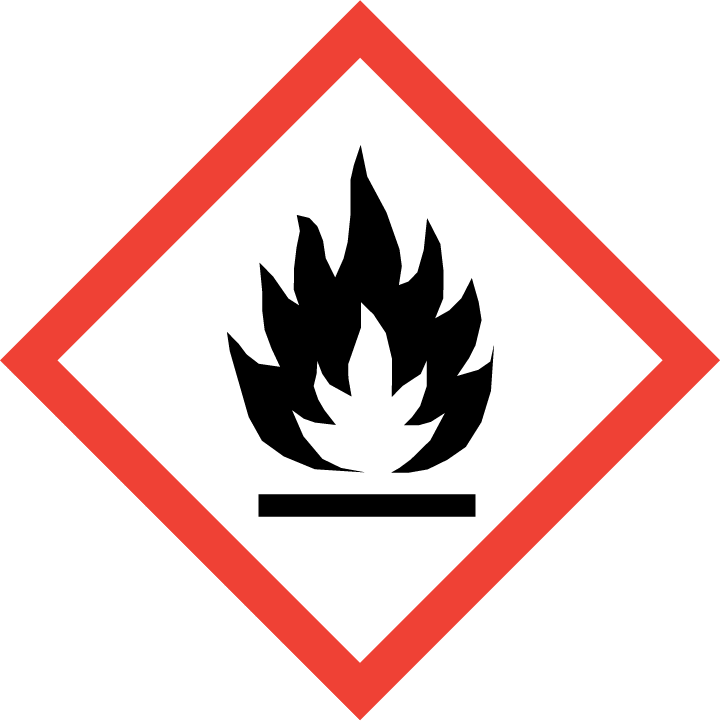   |
|---|---|
| Signal word | Danger |
| Hazard statement(s) | H225 Highly flammable liquid and vapour H319 Causes serious eye irritation H335 May cause respiratory irritation H351 Suspected of causing cancer |
| Precautionary statement(s) | |
| Prevention | P210 Keep away from heat, hot surfaces, sparks, open flames and other ignition sources. No smoking. P233 Keep container tightly closed. P240 Ground and bond container and receiving equipment. P241 Use explosion-proof [electrical/ventilating/lighting/...] equipment. P242 Use non-sparking tools. P243 Take action to prevent static discharges. P280 Wear protective gloves/protective clothing/eye protection/face protection. P264 Wash ... thoroughly after handling. P261 Avoid breathing dust/fume/gas/mist/vapours/spray. P271 Use only outdoors or in a well-ventilated area. P201 Obtain special instructions before use. P202 Do not handle until all safety precautions have been read and understood. |
| Response | P303+P361+P353 IF ON SKIN (or hair): Take off immediately all contaminated clothing. Rinse skin with water [or shower]. P370+P378 In case of fire: Use ... to extinguish. P305+P351+P338 IF IN EYES: Rinse cautiously with water for several minutes. Remove contact lenses, if present and easy to do. Continue rinsing. P337+P313 If eye irritation persists: Get medical advice/attention. P304+P340 IF INHALED: Remove person to fresh air and keep comfortable for breathing. P312 Call a POISON CENTER/doctor/…if you feel unwell. P308+P313 IF exposed or concerned: Get medical advice/ attention. |
| Storage | P403+P235 Store in a well-ventilated place. Keep cool. P403+P233 Store in a well-ventilated place. Keep container tightly closed. P405 Store locked up. |
| Disposal | P501 Dispose of contents/container to ... |
none
3.Composition/information on ingredients 3.1 Substances| Chemical name | Common names and synonyms | CAS number | EC number | Concentration |
|---|---|---|---|---|
| 1,4-Dioxane | 1,4-Dioxane | 123-91-1 | none | 100% |
Consult a physician. Show this safety data sheet to the doctor in attendance.
If inhaledFresh air, rest. Refer immediately for medical attention.
In case of skin contactRemove contaminated clothes. Rinse skin with plenty of water or shower.
In case of eye contactRinse with plenty of water for several minutes (remove contact lenses if easily possible).
If swallowedRinse mouth. Do NOT induce vomiting. Seek medical attention if you feel unwell.
4.2 Most important symptoms/effects, acute and delayedNo significant irritation from brief exposure of skin; prolonged or repeated exposure may cause a rash or burn and absorption of toxic amounts leading to serious injury of liver and kidney. Chemical has poor warning properties; illness may be delayed. Moderately irritating to eyes; overexposure may cause corneal injury. (USCG, 1999)
4.3 Indication of immediate medical attention and special treatment needed, if necessaryExposures of the eye... must be flushed immediately with water. Likewise, any clothing that becomes contaminated with dioxane should be removed and contaminated skin irrigated with soap and water.
5.Fire-fighting measures 5.1 Extinguishing media Suitable extinguishing mediaApproach fire from upwind to avoid hazardous vapors and toxic decomposition products. Use water spray, dry chemical. "alcohol resistant" foam, or carbon dioxide. Use water spray to keep fire-exposed containers cool.
5.2 Specific hazards arising from the chemicalSpecial Hazards of Combustion Products: Toxic vapors are generated when heated. Behavior in Fire: Vapor is heavier than air and may travel to a source of ignition and flash back. (USCG, 1999)
5.3 Special protective actions for fire-fightersWear self-contained breathing apparatus for firefighting if necessary.
6.Accidental release measures 6.1 Personal precautions, protective equipment and emergency proceduresUse personal protective equipment. Avoid dust formation. Avoid breathing vapours, mist or gas. Ensure adequate ventilation. Evacuate personnel to safe areas. Avoid breathing dust. For personal protection see section 8.
6.2 Environmental precautionsPersonal protection: filter respirator for organic gases and vapours adapted to the airborne concentration of the substance. Collect leaking liquid in sealable air tight containers. Absorb remaining liquid in sand or inert absorbent. Then store and dispose of according to local regulations. Do NOT wash away into sewer.
6.3 Methods and materials for containment and cleaning up1) Remove all ignition sources. 2) ventilate area of spill or leak. 3) for small quantities, absorb on paper towels. Evaporate in safe place (such as flame hood). Allow ... to completely clear hood ductwork. Burn in suitable location away from combustible materials. Large quantities can be collected and atomized in suitable combustion chamber equipped with appropriate effluent gas cleaning device. Dioxane should not be allowed to enter confined space, such as sewer. ...
7.Handling and storage 7.1 Precautions for safe handlingAvoid contact with skin and eyes. Avoid formation of dust and aerosols. Avoid exposure - obtain special instructions before use.Provide appropriate exhaust ventilation at places where dust is formed. For precautions see section 2.2.
7.2 Conditions for safe storage, including any incompatibilitiesFireproof. Separated from strong oxidants, strong acids and incompatible materials. Cool. Dry. Well closed. Keep in the dark. Store only if stabilized. Store in an area without drain or sewer access.Store in a cool, dry, well-ventilated location. Store away from heat, oxidizing materials, and sunlight. Outside or detached storage is preferred. Inside storage should be in a standard flammable liquids storage warehouse, room, or cabinet.
8.Exposure controls/personal protection 8.1 Control parameters Occupational Exposure limit valuesNIOSH considers dioxane to be a potential occupational carcinogen.
NIOSH usually recommends that occupational exposures to carcinogens be limited to the lowest feasible concentration.
Recommended Exposure Limit: 30 Minute Ceiling value: 1 ppm (3.6 mg/cu m).
Biological limit valuesno data available
8.2 Appropriate engineering controlsHandle in accordance with good industrial hygiene and safety practice. Wash hands before breaks and at the end of workday.
8.3 Individual protection measures, such as personal protective equipment (PPE) Eye/face protectionSafety glasses with side-shields conforming to EN166. Use equipment for eye protection tested and approved under appropriate government standards such as NIOSH (US) or EN 166(EU).
Skin protectionWear impervious clothing. The type of protective equipment must be selected according to the concentration and amount of the dangerous substance at the specific workplace. Handle with gloves. Gloves must be inspected prior to use. Use proper glove removal technique(without touching glove's outer surface) to avoid skin contact with this product. Dispose of contaminated gloves after use in accordance with applicable laws and good laboratory practices. Wash and dry hands. The selected protective gloves have to satisfy the specifications of EU Directive 89/686/EEC and the standard EN 374 derived from it.
Respiratory protectionWear dust mask when handling large quantities.
Thermal hazardsno data available
9.Physical and chemical properties| Physical state | Colorless clear liquid |
|---|---|
| Colour | Colorless liquid or solid (below 53 degrees F) |
| Odour | Faint pleasant odor |
| Melting point/ freezing point | -37°C(lit.) |
| Boiling point or initial boiling point and boiling range | 100-102°C(lit.) |
| Flammability | Class IB Flammable Liquid: Fl.P. below 22.78°C and BP at or above 37.78°C.Highly flammable. Gives off irritating or toxic fumes (or gases) in a fire. |
| Lower and upper explosion limit / flammability limit | LOWER: 2.0%; UPPER: 22% |
| Flash point | 12°C |
| Auto-ignition temperature | 180°C |
| Decomposition temperature | no data available |
| pH | no data available |
| Kinematic viscosity | 0.0120 centipoise at 25°C |
| Solubility | In water:SOLUBLE |
| Partition coefficient n-octanol/water (log value) | log Kow = -0.27 |
| Vapour pressure | 27 mm Hg ( 20 °C) |
| Density and/or relative density | 1.034g/mLat 25°C(lit.) |
| Relative vapour density | 3 (vs air) |
| Particle characteristics | no data available |
no data available
10.2 Chemical stabilityStable under recommended storage conditions. Test for peroxide formation before distillation or evaporation. Test for peroxide formation or discard after 1 year. Stable under recommended storage conditions.
10.3 Possibility of hazardous reactionsA very dangerous fire and explosion hazard when exposed to heat or flame.The vapour is heavier than air and may travel along the ground; distant ignition possible.DIOXANE is a flammable liquid; when exposed to air it undergoes autooxidation with formation of peroxides. In the distillation process peroxides will concentrate causing violent explosion. The addition complex with sulfur trioxide (1:1) sometimes decomposes violently on storing at room temperature [Sisler, H. H. et al., Inorg. Synth., 1947, 2, p. 174]. Evaporation of boron trifluoride in aqueous dioxane with nitric acid led to an explosion upon addition of perchloric acid [MCA Guide, 1972, p. 312]. Explosive reaction with Raney nickel catalyst above 210° C {Mozingo R., Org. Synth., 1955, Coll. Vol. 3, p. 182].
10.4 Conditions to avoidno data available
10.5 Incompatible materialsPure, dry, o- and hydroperoxide-free dioxane rapidly forms hydroperoxide on contact with air.
10.6 Hazardous decomposition productsWhen heated to decomposition it emits acrid smoke and irritating fumes.
11.Toxicological information Acute toxicity- Oral: LD50 Guinea pig oral 3150 mg/kg
- Inhalation: LC50 Mouse inhalation 37 g/cu m/2 hr
- Dermal: no data available
no data available
Serious eye damage/irritationno data available
Respiratory or skin sensitizationno data available
Germ cell mutagenicityno data available
CarcinogenicityNTP: Reasonably anticipated to be a human carcinogen
Reproductive toxicityNo information is available on the reproductive and developmental effects of 1,4-dioxane in humans. No evidence of gross, skeletal, or visceral malformations was found in the offspring of rats exposed via gavage (experimentally placing the chemical in the stomach). Embryotoxicity was observed only at the highest dose.
STOT-single exposureno data available
STOT-repeated exposureno data available
Aspiration hazardno data available
12.Ecological information 12.1 Toxicity- Toxicity to fish: LC50; Species: Lepomis macrochirus (Bluegill sunfish); Conditions: freshwater, static bioassay, 23°C, mild aeration applied after 24 hr; Concentration: 10,000 ppm for 96 hr
- Toxicity to daphnia and other aquatic invertebrates: EC50; Species: Daphnia magna (Water flea); Concentration: 4,700 mg/L for 24 hr (nominal concentration); Effect: immobility /Conditions of bioassay not specified in source examined/ /from table
- Toxicity to algae: no data available
- Toxicity to microorganisms: no data available
AEROBIC: 1,4-Dioxane, present at 100 mg/L, reached 0% of its theoretical BOD in 2 weeks using an activated sludge inoculum at 30 mg/L in the Japanese MITI test which classified the compound as not readily biodegradable(1). Using OECD Guideline 301F (Ready Biodegradability: Manometric Respirometry Test) with a non-adapted activated sludge inoculum, 1,4-dioxane degraded <10% over a 29-day incubation period at an initial concentration of 100 mg/L(2). Using OECD Guideline 310 (Ready Biodegradability, CO2 in sealed vessels) with a non-adapted activated sludge inoculum, 1,4-dioxane (at 37.1 mg/L) had <5% degradation (via CO2 evolution) over a 60-day incubation period which classified the compound as poorly biodegradable(2). Other screening studies have found 1,4-dioxane to be resistant to biodegradation(3-6). 1,4-Dioxane (100 mg/L) was not biodegraded within 120 days using microcosms prepared with 20 grams of Nodeway soil and 200 mL of basal salt medium, and was considered recalcitrant in the environment(7). Possibly due to its strong internal chemical bonding, 1,4-dioxane is considered non-biodegradable under conventional bio-treatment technologies based on results of wastewater treatment monitoring data(8). To evaluate the biodegradation potential of 1,4-dioxane in natural environments, a total of 20 environmental samples including river water, activated sludge, soil from the drainage area of a chemical factory and garden soil were subjected to a 1,4-dioxane degradation test(9); 14 of the 20 samples were not able to degrade 1,4-dioxane(9); however, soil samples from the drainage area of a chemical factory were able to degrade 1,4-dioxane (at 100 mg/L) to <0.8 mg/L within 33 days, presumably due to adaptation(9).
12.3 Bioaccumulative potentialUsing OECD Guideline 305C (Bioaccumulation: Test for the Degree of Bioconcentration in Fish) with 1 and 10 ppm concentrations 1,4-dioxane, BCF values of 0.2-0.7 were measured using carp (Cyprinus carpio) which were exposed over a 6-week period(1). According to a classification scheme(2), these BCF values suggest the potential for bioconcentration in aquatic organisms is low(SRC).
12.4 Mobility in soilUsing a soil adsorption coefficient (Kd) of 0.17 for 1,4-dioxane measured in a grey clay soil (45% clay, 43% silt, 10% sand) obtained from a landfill site in Ontario, Canada(1), a Koc value of 29 can be derived(SRC) using the soil's organic carbon content of 0.58%(1). A measured Koc value of 17 has also been reported for 1,4-dioxane(2). According to a classification scheme(3), these Koc values suggest that 1,4-dioxane is expected to have very high mobility in soil(SRC).
12.5 Other adverse effectsno data available
13.Disposal considerations 13.1 Disposal methods ProductThe material can be disposed of by removal to a licensed chemical destruction plant or by controlled incineration with flue gas scrubbing. Do not contaminate water, foodstuffs, feed or seed by storage or disposal. Do not discharge to sewer systems.
Contaminated packagingContainers can be triply rinsed (or equivalent) and offered for recycling or reconditioning. Alternatively, the packaging can be punctured to make it unusable for other purposes and then be disposed of in a sanitary landfill. Controlled incineration with flue gas scrubbing is possible for combustible packaging materials.
14.Transport information 14.1 UN Number| ADR/RID: UN1165 | IMDG: UN1165 | IATA: UN1165 |
| ADR/RID: DIOXANE |
| IMDG: DIOXANE |
| IATA: DIOXANE |
| ADR/RID: 3 | IMDG: 3 | IATA: 3 |
| ADR/RID: II | IMDG: II | IATA: II |
| ADR/RID: no | IMDG: no | IATA: no |
no data available
14.7 Transport in bulk according to Annex II of MARPOL 73/78 and the IBC Codeno data available
15.Regulatory information 15.1 Safety, health and environmental regulations specific for the product in question| Chemical name | Common names and synonyms | CAS number | EC number |
|---|---|---|---|
| 1,4-Dioxane | 1,4-Dioxane | 123-91-1 | none |
| European Inventory of Existing Commercial Chemical Substances (EINECS) | Listed. | ||
| EC Inventory | Listed. | ||
| United States Toxic Substances Control Act (TSCA) Inventory | Listed. | ||
| China Catalog of Hazardous chemicals 2015 | Listed. | ||
| New Zealand Inventory of Chemicals (NZIoC) | Listed. | ||
| Philippines Inventory of Chemicals and Chemical Substances (PICCS) | Listed. | ||
| Vietnam National Chemical Inventory | Listed. | ||
| Chinese Chemical Inventory of Existing Chemical Substances (China IECSC) | Listed. | ||
| Creation Date | Aug 10, 2017 |
|---|---|
| Revision Date | Aug 10, 2017 |
- CAS: Chemical Abstracts Service
- ADR: European Agreement concerning the International Carriage of Dangerous Goods by Road
- RID: Regulation concerning the International Carriage of Dangerous Goods by Rail
- IMDG: International Maritime Dangerous Goods
- IATA: International Air Transportation Association
- TWA: Time Weighted Average
- STEL: Short term exposure limit
- LC50: Lethal Concentration 50%
- LD50: Lethal Dose 50%
- EC50: Effective Concentration 50%
- IPCS - The International Chemical Safety Cards (ICSC), website: http://www.ilo.org/dyn/icsc/showcard.home
- HSDB - Hazardous Substances Data Bank, website: https://toxnet.nlm.nih.gov/newtoxnet/hsdb.htm
- IARC - International Agency for Research on Cancer, website: http://www.iarc.fr/
- eChemPortal - The Global Portal to Information on Chemical Substances by OECD, website: http://www.echemportal.org/echemportal/index?pageID=0&request_locale=en
- CAMEO Chemicals, website: http://cameochemicals.noaa.gov/search/simple
- ChemIDplus, website: http://chem.sis.nlm.nih.gov/chemidplus/chemidlite.jsp
- ERG - Emergency Response Guidebook by U.S. Department of Transportation, website: http://www.phmsa.dot.gov/hazmat/library/erg
- Germany GESTIS-database on hazard substance, website: http://www.dguv.de/ifa/gestis/gestis-stoffdatenbank/index-2.jsp
- ECHA - European Chemicals Agency, website: https://echa.europa.eu/






